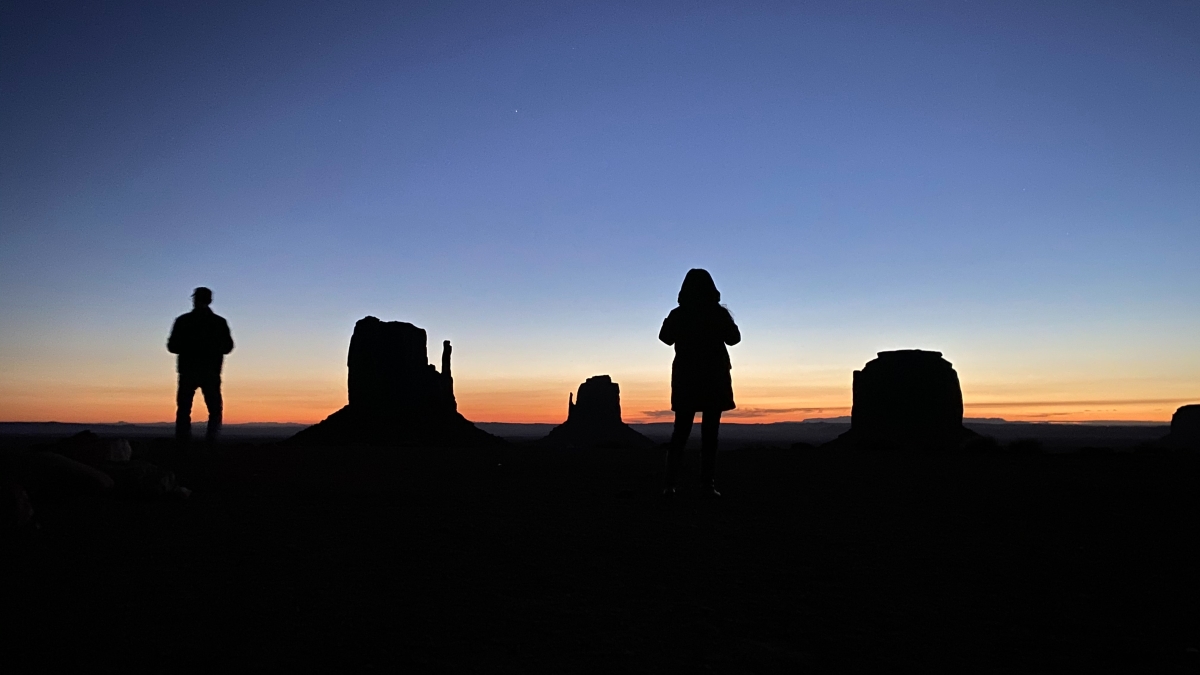Addiction grant helps local Native American populations fight substance abuse

According to a 2021 report by the Arizona Department of Health Services, Native Americans are 20% more likely to die from drug-induced deaths than the state average, 40% more likely to die by suicide and 500% more likely to experience alcohol-induced deaths, which results in a median age at death that is almost 15 years younger than the Arizona median. An interdisciplinary team at ASU aims to change this. Photo by Daniel Gregoire/Unsplash
According to a 2021 report by the Arizona Department of Health Services, Native Americans are 20% more likely to die from drug-induced deaths than the state average, 40% more likely to die by suicide and 500% more likely to experience alcohol-induced deaths, which results in a median age at death that is almost 15 years younger than the Arizona median.
An interdisciplinary team at Arizona State University aims to change this.
The ASU Department of Psychology recently received a new $1.33 million grant from the U.S. Health Resources and Services Administration (HRSA) to help train doctoral psychology students in the latest addiction treatment and management techniques, beginning in July 2022.
The Graduate Psychology Training Consortium assembles experts from five ASU programs, including clinical psychology, counseling psychology, integrated behavioral health, social work and nursing.
Faculty with a vast array of experience and expertise from the five collaborating ASU programs will provide a comprehensive, state-of-the-science training program that will develop competency in integrated health, behavioral health and opioid and other substance use disorder treatment, with a focus on serving Native Americans.
These trainings will be open to faculty and graduate students from the five collaborating programs, as well as to community providers.
In addition to the training component, this grant includes partnerships with two community providers where psychology graduate students will have hands-on training in assisting Indigenous and underserved populations in the state.
“One of those locations that our students will be working in is located in Navajo Nation. We also have a Native American consultant for the grant who will be helping us navigate how we provide culturally competent services that improve the trust with the health care system among the Native American population,” said Matthew Meier, clinical associate professor and co-director of clinical training. Meier is also the director of the new online master’s degree in addiction psychology launching in fall 2022.
“Through the learned experiences of research and maintaining positive collaborative relationships with tribes, it is imperative that tribal understanding is developed and maintained. Most importantly, ensuring that tribal sovereignty and respect to cultural and traditional practices is adhered to,” said Valaura Imus-Nahsonhoya, the founder and executive director of Honwungsi Consulting Services.
The Honwungsi Consulting agency provides consulting services to state, federal, nonprofit and for-profit agencies working in tribal areas. This consulting ensures that training information and delivery is culturally competent in respect to particular tribal participants.
ASU is partnering with the Canyonlands Healthcare Agency, a community mental health agency, that has local clinics, primary care, as well as integrated behavioral health in the north and east areas of Arizona. This facility has been designated as a Federally Qualified Health Center and is supported by federal grants under the U.S. Public Health Service Act.
Additionally, the department is partnering with Solutions of Sobriety, which has an existing contract with Indian Health Services to provide substance abuse, recovery, housing, outpatient and intensive inpatient care.
“The goal for this grant is to train psychologists to do integrated health. We are providing behavioral health services in primary care settings, as well as opioid and other substance use disorder treatments. Additionally, the training provides experience with telehealth treatment for populations that have been traditionally unable to access treatment,” Meier said.
Related: ASU launches new master’s degree in addiction psychology with included practicum experience
Expanding services in rural communities.
“One major goal of this grant is to expose trainees to rural settings and provide training in culturally competent care, which will increase the likelihood that they will provide services in these rural communities in the future. This is a major challenge to encourage licensed professionals to move into isolated communities to solve that treatment gap,” Meier said.
“Telehealth now opens a whole new avenue to get services into underserved areas without having to move professionals into these small communities."
Related: ASU wins grant to establish interdisciplinary training program to fight the opioid epidemic
“The HRSA grant will allow us to develop and disseminate a state-of-the-science training to a broad range of students, faculty and community providers, as well as increase access to culturally competent psychological services for Native Americans,” Meier said.
More Science and technology

Applied Materials invests in ASU to advance technology for a brighter future
For nearly 60 years, global giant Applied Materials has been hard at work engineering technology that continues to change how…

Meet ASU engineering students who are improving health care, computing and more
Furthering knowledge of water resource management, increasing the efficiency of manufacturing point-of-care health diagnostic…

Turning up the light: Plants, semiconductors and fuel production
What can plants and semiconductors teach us about fuel production?ASU's Gary Moore hopes to find out.With the aim of learning how…

